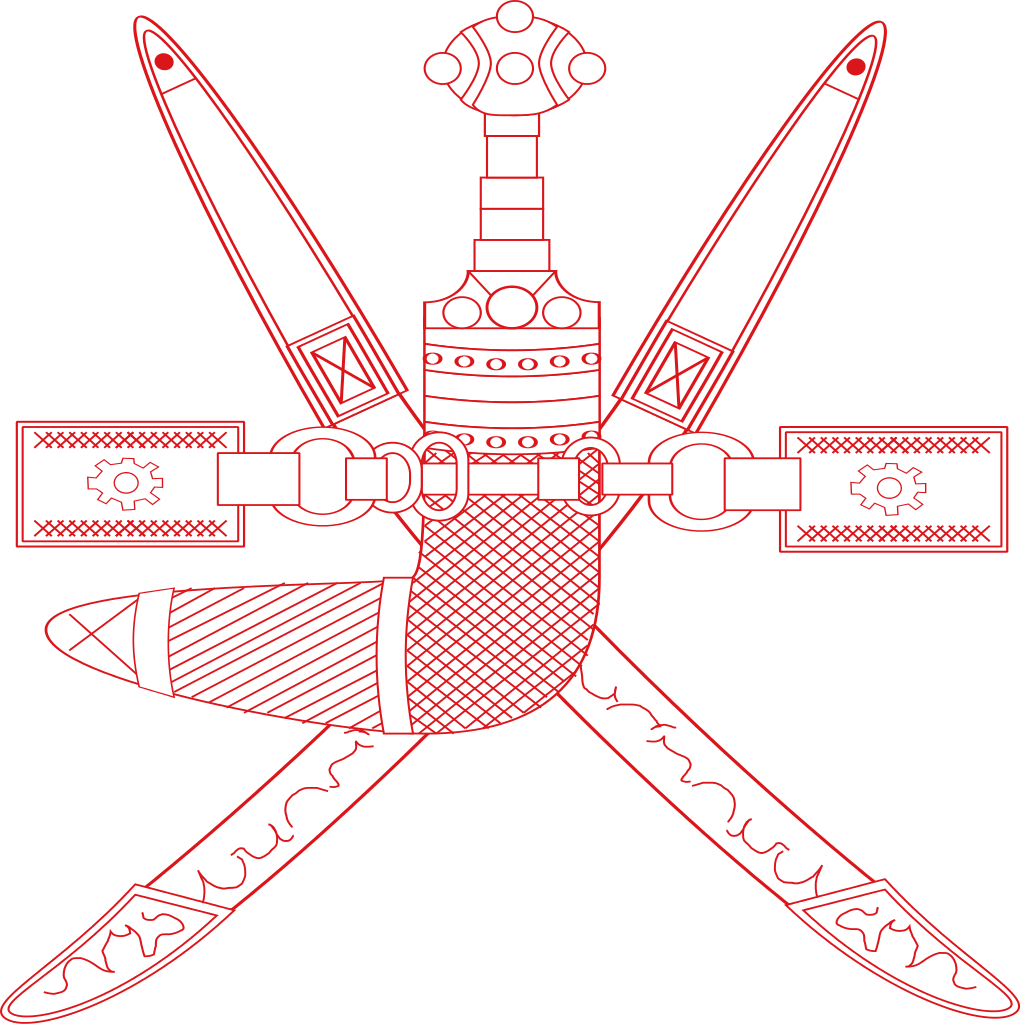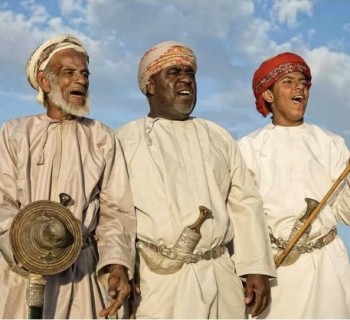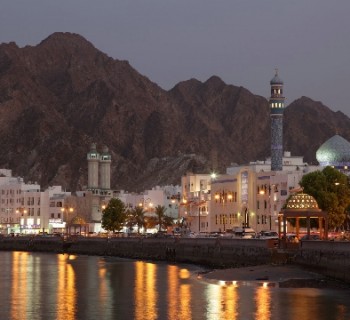Coat of arms of Oman

Connoisseurs of heraldry at one glance at the main official symbol of a particular state can tell a lot about its politics and political aspirations, economy and culture. The coat of arms of Oman, the first images of which appeared in the middle of the 18th century, is one of the most warlike in the history of the countries of this small planet.
Cold steel - a symbol of strength
The composition of the coat of arms is quite simple and uses the minimum number of elements:
- two crossed sabers;
- khanjar - a traditional Arabic dagger;
- details of the belt on which the weapon was worn.
The color palette of the main symbol of the country is monochrome; for the image, a single color has been chosen - scarlet, which reminds of the change in the color of the metal during hardening. This choice of elements of the main state symbol is explained by the difficult political and economic situation in Oman, the desire of the authorities to demonstrate the strength and readiness to defend the borders.
Traditional weapons
Khanjar refers to the traditional types of edged weapons in Arab countries. On the coat of arms of Oman, it is covered, and the cover has a pronounced curved shape. The blade is not visible, but its curvature is not as sharp as that of the case. In reality, this weapon looks very beautiful, since it is forged by hand..
Its main role is protection from the enemy, so the blade is made double-edged, and the length is varied, a short khanjar can act as a dagger, a longer one - a sword. In addition to being one of the main elements of the country's coat of arms, it is also present on the national flag. And one of the richest collections of this type of national edged weapons is kept in a museum in Muscat..
In the old days, such weapons were an integral part of the national costume of an Omani man. Without it, a native of Oman was virtually impossible to appear on the street. Today, the tradition of wearing khanjar has survived only in rural areas, in the city they are returned to men's attire during important public holidays or family celebrations..
Another type of cold steel used earlier by the inhabitants of the country is sabers. In their manufacture, local craftsmen have achieved great success, and forged weapons have two advantages - they are dangerous in battle and beautiful..
Saber dance is widespread in Oman - a peaceful demonstration of real strength. Prominent politicians who come to Oman for official purposes are also invited to participate in the dance..


